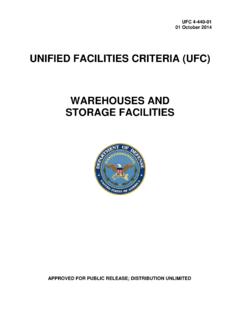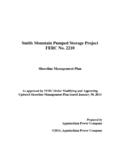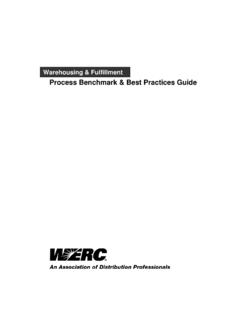Transcription of THE LEGAL ISSUES OF BUSINESS CONTINUITY …
1 The LEGAL ISSUES of BUSINESS CONTINUITY planning By Neil H. Kaufman SVP & National BCP Practice Leader Risk Solutions International LLC Despite the widespread reporting of disasters and their effects, many companies, corporate directors, and officers remain apathetic toward implementing a BUSINESS CONTINUITY /disaster recovery plan. Many companies are generally unwilling to commit the finances and resources to implement a plan unless forced to do so. However, implementing a BUSINESS CONTINUITY /disaster recovery plan is a strategic, moral, and LEGAL obligation to one s company. If the billions of dollars spent on technology annually to maintain a competitive edge is an indication of how reliant our society is on technology, then failing to implement a disaster recovery plan is an indication of corporate negligence.
2 Standards of care and due diligence are required of all corporations, public or private. Not having a disaster recovery plan violates that fiduciary standard of care. The LEGAL ISSUES involved in corporate contingency planning are some of the most misunderstood and confusing aspects of the entire process of creating a disaster recovery plan. Disaster recovery planners are not expected to be lawyers. However, they are encumbered with the responsibility of understanding the minutiae and vagueness of existing regulatory guidelines and the LEGAL consequences of their company s failure to implement an effective disaster recovery plan. Although no specific laws state categorically that companies must have a disaster recovery plan, there is a body of LEGAL precedents which can be used to hold companies and individuals responsible to those affected by a company s inability to cope and/or recover from a disaster.
3 The entire basis of law relating to the development of disaster recovery plans is based on civil statutes and an interpretation of applicability to disaster recovery planning . One of the precedents which can be used against companies which fail to plan for a disaster is drawn from the case of FJS Electronics v. Fidelity Bank. In this 1981 case, FJS Electronics sued Fidelity Bank over a failure to stop payment on a check. Although the failure to stop payment of the check was more procedural in nature, the court ruled that Fidelity Bank assumed the risk that the system would fail to stop a check. FJS was able to prove that safeguards should have been in place and therefore was awarded damages. This case shows that the use of a computer system in BUSINESS does not change an organization s duty of reasonable care in its daily operations.
4 The court ruled that the bank s failure to install a more flexible, error tolerant system inevitably led to problems. As a result, information technology professionals will be held to a standard of reasonable care and can breach that duty by not diligently pursuing the development of a disaster recovery plan. To help you become aware of the areas where disaster recovery planning and the law intersect, we have categorized applicable statutes. While each category is presented, this list is intended to be neither exhaustive nor fully comprehensive. 1. Contingency planning Statutes Apply to the development of plans to ensure the recoverability of critical systems. Example: Federal Financial Institutions Examination Council ( FFIEC ). The FFIEC guidelines replace previously issued Banking Circulars BC 177, BC 226, etc.
5 2. Liability Statutes Establish levels of liability under the Prudent Man Laws for directors and officers of a corporation. Example: Foreign Corrupt Practices Act ( FCPA ). 3. Life / Safety Statutes Set out specific ordinances for ensuring the protection of employees in the workplace. Examples: National Fire Protection Association ( NFPA ), Occupational Safety & Health Administration ( OSHA ). 4. Risk Reduction Statutes Stipulate areas of risk management required to reduce and/or mitigate the effects of a disaster. Examples: Office of the Comptroller ( OCC ) Circular 235 and Thrift Bulletin 30. Security Statutes cover areas of computer fraud, abuse and misappropriation of computerized assets. Example: Federal Computer Security Act. 5. Vital Records Management Statutes Specifications for the retention and disposition of corporate electronic and hardcopy records.
6 Example: IRS Records Retention requirements. STATUTORY EXAMPLES When the time comes to defend your company against a civil or criminal lawsuit resulting from damages caused by your company s failure to meet a standard of care, you ll need more than an Act of God defense. When no direct law or statute exists for a specific industry, the courts will look to other industries for guidelines and LEGAL precedents. The following three statutes represent the areas in which a court will most likely seek a LEGAL precedent: 1. Foreign Corrupt Practices Act ( FCPA ) The FCPA of 1977 was originally designed to eliminate bribery and to make illegal the destruction of corporate documents to cover up a crime. To accomplish this, the FCPA requires corporations to .. make and keep books, records, and accounts, which, in reasonable detail, accurately and fairly reflect the transactions and dispositions of the The section of this Act which keeps it at the forefront of disaster recovery liability is the Standard of Care wording, whereby management can be judged on their mismanagement of corporate assets.
7 The FCPA is unique in that it holds corporate managers personally liable for protecting corporate assets. Failure to comply with the FCPA exposes individuals and companies to the following: Personal fines up to $10,000; Corporate fines up to $1,000,000; and Prison terms up to five years. 2. In the financial services industry, the Federal Financial Institutions Examinations Council ( FFIEC ) The Comptroller of the currency has issued various circulars dating back to 1983 ( , Banking Circular BC 177) regarding the need for financial institutions to implement disaster recovery plans. However, in 1989, a joint agency Circular was issued on behalf of the following agencies: Board of Governors of the Federal Reserve System ( FRB ); Federal Deposit Insurance Corporation ( FDIC ); National Credit Union Administration ( NCUA ); Office of the Comptroller of the Currency ( OCC ); and Office of Thrift Supervision ( OTS ).
8 The Circular states that The loss or extended interruption of BUSINESS operations, including central computing processing, end user computing, local area networking, and nationwide telecommunications poses substantial risk of financial loss and could lead to failure of an institution. As a result, contingency planning now requires an institution wide The FFIEC guidelines relating to contingency planning are actually contained within 10 technology related Supervisory Policy Statements. These policies are revised every two years and can be acquired through any of the five agencies listed above. 3. The Consumer Credit Protection Act ( CCPA ) On November 10, 1992, the 95th Congress, 2nd Session, amended section 2001 of the Consumer Credit Protection Act (15 1601 et seq.)
9 TITLE IX Electronic Funds Transfers. The purpose of this amendment was to remove any ambiguity the previous statute had in identifying the rights and liabilities of consumers, financial institutions, and intermediaries in Electronic Funds Transfers. This Act covers a wide variety of industries, specifically those involved in electronic transactions originating from point of sale transfers, automated teller machines, direct deposits or withdrawals of funds, and fund transfers initiated by telephone. The Act further states that any company which facilitates electronic payment requests which ultimately result in a debit or credit to a consumer account must comply with the provisions of the Act. Failure to comply with the provisions of this Act exposes a company and its employees to the following liabilities: Any actual damage sustained by the consumer; Amounts of not less than $100 or greater than $1,000 for each act; Amounts of $500,000 or greater in class action suits; and All costs of the court action and reasonable attorneys fees.
10 Companies covered under this Act are subject to all liabilities and all resulting damages proximately caused by the failure to make an Electronic Funds Transfer. The Act states that a company may not be liable under the Act if that company shows by a preponderance of evidence that its actions or failure to act were caused by .. an Act of God or other circumstances beyond its control, that it expressed reasonable care to prevent such an occurrence, and that it expressed such diligence as the circumstances required .. Each of these statutes are based on the precept of Standard of Care. Standard of Care is described by the LEGAL publication entitled Corpus Juris Secundum, Volume 19, Section 491 as .. directors and officers owe a duty to the corporation to be vigilant and to exercise ordinary or reasonable care and diligence and the utmost good faith and fidelity to conserve the corporate property; and, if a loss or depletion of assets results from their willful or negligent failure to perform their duties, or to a willful or fraudulent abuse of their trust, they are liable, provided such losses were the natural and necessary consequences of omission on their part.






